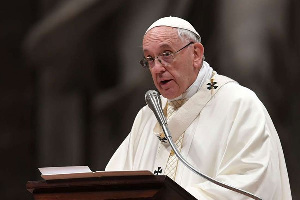When the Pope dies (or resigns, as in the rare case of Pope Benedict XVI in 2013), the cardinals are summoned to a meeting at the Vatican, followed by the conclave, as the election is known.

During the time between the Pope’s death and the election of his successor, the College of Cardinals governs the Church.
According to a BBC report, the election is held in strict secrecy inside the Sistine Chapel, famously painted by Michelangelo.
However, individual cardinals vote for their preferred candidate until a winner is determined, a process which can take several days.
In previous centuries, voting has gone on for weeks or months. Some cardinals have even died during conclaves, the report said.
The only clue about how the election proceeds is the smoke that emerges twice a day from burning the cardinals’ ballot papers. Black signals failure. The traditional white smoke means the new Pope has been chosen.
After the white smoke goes up, the new Pope normally appears within an hour on the balcony overlooking St Peter’s Square.
The senior cardinal participating in the conclave will announce the decision with the words ‘Habemus Papam’ – Latin for ‘we have a Pope’.
He will then introduce the new Pope by his chosen papal name, which may or may not be his original given name.
For example, Pope Francis was born Jorge Mario Bergoglio, but he chose a different name for his papacy in honour of St Francis of Assisi.
Source: www.thepressradio.com
